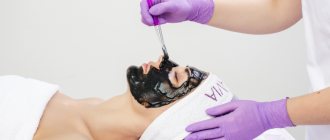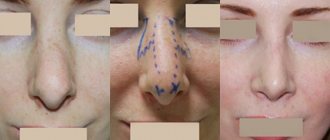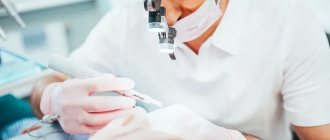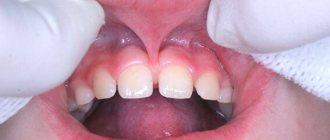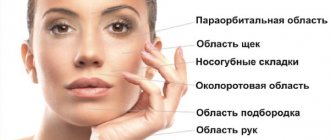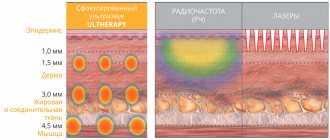The term collagen comes from the Greek words kolla (glue) and genes (generative). It is a component of connective tissue and is present in the skin, bones, ligaments, cartilage, tendons and blood vessel walls. Connective tissue performs the main protective and support functions in the body, determining the physiological characteristics of all organs and structures. The collagen contained in this tissue is a protein filament. This is the main component of the intercellular substance, the matrix, filling the space between cells and organs.
What is collagen
Collagen is a protein fiber that forms the bulk of the body's connective tissue and provides its strength. Contained in skin, muscles, tendons, ligaments, cartilage, joints, etc.
We are only interested in collagen in the skin. To understand exactly where it is located, imagine the structure of the skin.
Following its top layer (epidermis) comes a supporting layer - the dermis. The dermis consists of cells (20%) and an intercellular matrix (80%) - a kind of cellular “glue” that binds cells together. The youth of our face depends on its condition.
What does the extracellular matrix look like? This is a kind of “framework” of protein fibers (collagen and elastin), which is immersed in a liquid, gel-like medium (hyaluronic acid). An image that will help represent these matrix components is a spring mattress. Collagen and elastin are the “springs”, hyaluronic acid is the “filler”.
And the basis of this “framework” is collagen. It accounts for 70% of the protein mass in the dermis.
It is easy to imagine each such collagen “spring”. It looks like three threads that twist in a spiral. These strands are made up of a chain of different amino acids.
Depending on the set of amino acids, more than 20 types of collagen are distinguished. Only some of them are synthesized in the human body. For youthful skin, collagen types I and VII are most important.
Why is it needed?
Collagen supports the skin from the inside, like springs support a mattress. He is responsible for its strength and elasticity. That is, the skin is not damaged when stretched and does not change its structure precisely thanks to collagen. It seems to “spring”: it stretches and returns to its original shape.
This fixing role of collagen is also indicated by its name. From Greek kola – “glue”, gen – “to create”.
Collagen depends on:
- skin elasticity,
- tightened oval,
- smooth relief without wrinkles,
- shape and proportions of the face.
But what exactly happens to collagen when age-related changes begin? Most of us don't know the answer to this question. Instead, they believe in dangerous myths that are spread by cosmetologists.
Myths about collagen
From all corners of the Internet, cosmetologists shout with one voice that aging is associated with a reduction in the level of collagen in the dermis. We are convinced that we need lots and lots of new protein to stay young. As a means of salvation, they offer collagen injections, cosmetics, dietary supplements, which are supposedly capable of filling our skin with collagen in incredible quantities.
How much of this is true? NOTHING.
Myth: Collagen in the skin decreases with age, so it needs to be replenished.
Fact: Collagen accumulates in the skin over the years in the form of clumped fibers and debris, creating a lifeless, dense web. Its amount becomes critical and prevents nutrients and moisture from accumulating in the intercellular matrix and reaching the cells.
That's why:
- Our skin doesn't need more collagen than it has.
- On the contrary, its task is to get rid of the accumulated collagen “ballast”.
- For youth, it is not the quantity, but the quality of collagen that is important.
- Injections, creams, and dietary supplements containing collagen do not work.
- The most effective way to improve the quality of your own collagen is self-massage + a healthy lifestyle.
Now let's talk about everything in order.
How collagen in the skin decreases
With age, it is not the amount of the treasured protein that decreases (it actually increases), but its synthesis. That is, the production of new collagen slows down. And this is not a myth, but a fact.
It is believed that after 25-30 years, our skin reduces collagen production by 1-1.5% per year. At this rate, by menopause, a woman loses about a third of her renewed collagen (the old one does not go away and accumulates).
Some cosmetologists have more radical “statistics”. On the Internet you can find information that young skin produces about 6 kg of collagen per year, and after 35 years it reduces “production volumes” by half, but by menopause the synthesis practically stops.
Such data is a strong condensation of colors. In fact, new collagen is produced in the skin at 45, 50, 60 years old, and later, just in smaller quantities. And taking into account the deposits of “old” protein, the collagen mass only grows.
If it's not a matter of quantity, then what is it? That's right, in quality.
Indications for collagen rejuvenation
The cosmetic procedure eliminates and reduces the severity of the following skin defects:
- age-related signs of aging;
- photoaging;
- creases, folds and wrinkles;
- scars;
- stretch marks;
- cellulite deposits;
- post-acne;
- double chin;
- wide pores;
- nasolacrimal grooves;
- drooping upper eyelid;
- skin pigmentation;
- loss of clear reliefs and facial contours.
The biological product Nitiya is used to correct skin blemishes on the face and various parts of the body (forehead, in the area between the eyebrows, nasolabial folds, décolleté, chin, neck, arms, abdomen, chest, thighs and buttocks).
The minimally invasive technique is used as monotherapy, or in combination with mesotherapy, peeling and laser resurfacing.
How are age-related changes related to collagen?
Age-related changes are explained precisely by the quality of collagen, which deteriorates over the years. Its fibers become damaged, break, and stick together. And all this “garbage” accumulates.
The extracellular matrix is “cluttered” with protein fragments and cross-links. This is no longer a frame, but a “cemetery” of “dead” collagen (+ elastin). The stitches tighten the face with a dense network. The dermis seems to stick together with the covering layer, blocking the mobility and interaction of tissues with each other.
Such accumulations of damaged collagen are ballast that turns the fluid extracellular matrix into a dense, lifeless mass. In it, cells lose their former mobility and cease to receive moisture and nutrients in the same quantities (since the pathways are blocked by “clogs” of collagen cross-links and debris).
Wrinkles, sagging and roughening of facial skin are external manifestations of the fact that our face is covered with a tight web of lifeless collagen (+ elastin).
The accumulation of old, “dead” collagen and the reduction in the production of new, “live” collagen are two interrelated processes. The fact is that collagen is synthesized by fibroblast cells, and they can only work on whole collagen threads. What if instead of them there are fragments? Then the production of new fibers is disrupted.
Do you want to “revive” and renew your collagen? Come to the “Flourish” marathon from MelAnnett.
Collagen in cosmetics, injections, dietary supplements
Now let’s learn more about why we don’t need to add collagen to our skin. After all, the artificial need to eat it, rub it in, inject it is persistently imposed on us. All this is unnatural. At best it is useless, at worst it is harmful.
It is useless if collagen does not reach the dermis. It is harmful if it reaches and increases the accumulated ballast. Then the cells that could not receive nutrition and water find themselves in a double ambush of collagen.
Are they promising you that new, artificially introduced collagen will replace the old one? No. It will not happen. Not immediately, not later, never. No injections, creams or dietary supplements can renew our own “youth protein”.
Collagen lives in the skin for 10-15 years. And adding a synthesized analogue from the outside will not affect this cycle in any way.
What happens if you pump up your skin with collagen? Depends on the method:
- Cosmetics with collagen: creams, gels, masks, etc.
They do not harm the dermis, but are simply useless. Collagen, which is added to cosmetics, has a large protein molecule. It does not penetrate even the most superficial - stratum corneum - layer of the epidermis, not to mention the dermis. Such collagen only temporarily fills the unevenness and cracks on the surface of the epithelium, creates a moisturizing effect (forms a film that prevents the evaporation of water from the skin). - Collagen injections.
Like any other fillers, collagen fillers pump the skin with something it doesn't need (in this case, excess protein). This only “pushes” her and pulls her. When the drug dissolves, we will see the effect of a deflating balloon (remember how its relief changes as air leaves it).And this is another question of how the skin will react to foreign collagen. After all, industry has not synthesized substances of the native, human type. And the collagen that is used in cosmetology still needs to be integrated into the structures of the skin. And how will it succeed: will it survive or will it fall apart into its component parts? Most likely it will collapse. The “dump” will become even larger.
Benefits of collagen rejuvenation with Nithya
Nitiya rejuvenation is characterized by a number of advantages:
- an alternative method of botulinum therapy and the use of various fillers;
- safe and hypoallergenic composition, confirmed by laboratory and clinical studies;
- noticeable effect on the 16th day after the first session;
- maintaining skin sensitivity and natural facial expressions;
- long lasting result;
- short rehabilitation period.
In comparison with a collagen-containing product from a Russian manufacturer, Italian Nithya is superior in hypoallergenicity and protein composition.
What types of collagen are there?
Where does collagen come from, which is used in cosmetics and injections?
On an industrial scale, they learned to obtain it from three sources:
- Animal collagen.
Extracted from the skin of pigs and cattle. It's the cheapest. But today such collagen is prohibited from being used in cosmetics due to its aggressiveness and foreignness. There is a high risk of infection and allergies. You can add it to dietary supplements. - Collagen of plant origin.
This is more of a catchy metaphor than the truth. Plants do not produce collagen. And what is called collagen is a hydrolyzed protein - an artificial substance that is created on a plant base. Typically these are wheat proteins and algae. Production is difficult and expensive. - Marine collagen.
Extracted from fish skin. This is the closest option to a person, but still alien. Collagen from marine fish is considered an allergen, but not from freshwater fish.As we see, there is no choice. The first type of collagen is prohibited, the second is not collagen. Only fish remain.
Contraindications for collagen rejuvenation
Collagen therapy is contraindicated in the following cases:
- oncological pathologies;
- period of pregnancy and lactation;
- autoimmune pathologies;
- dermatosis;
- severe relapses of chronic pathologies;
- acute and inflammatory processes in the area of aesthetic intervention;
- cardiovascular pathologies;
- tendency to keloid scarring of the skin;
- diabetes;
- individual intolerance to Nitya components.
In addition, you should refrain from collagen therapy in the first days of the menstrual cycle due to an increase in the pain threshold of sensitivity.
Is it worth taking a collagen supplement?
Dietary supplements usually contain marine (fish) or animal collagen. Such nutritional supplements are useless and have almost no effect on the condition of the skin because:
- Such protein is difficult to absorb from the digestive tract.
- The renewal of collagen in the skin is regulated by complex biochemical processes, and only adjusting the diet cannot solve the problem. Yes, if you eat unhealthy food, it will increase the destruction of your own collagen; if you eat healthy food, it will prevent destructive processes. But food is not able to “make” fibroblasts work more actively.
Statements by dietary supplement manufacturers that their supplements can restore collagen levels or reverse the aging process are not substantiated.
Cosmetological methods of neocollagenesis
So far we have only talked about different ways of adding collagen to the skin from the outside. But in aesthetic medicine there is another fashionable and branched direction - neocollagenesis. This term refers to the activation of fibroblasts and collagen renewal using a number of hardware and invasive techniques.
There are three main cosmetic methods to “stir up” fibroblasts:
- Remove the top layer of the dermis
(laser and mechanical dermabrasion). Then fibroblasts will begin to “patch” the damaged area, “growing” new collagen. This is an aggressive and dangerous path that leads to tissue injury and leads to the formation of an unhealthy collagen “wall” instead of a framework. - Create a thermal burn
(RF lifting, laser lifting, thermage). The upper layers of the dermis heat up, the cells “sinter,” and the collagen fibers shrink and become denser. Externally, this short time may look like tightened skin. But what really happened? The skin has grown fibrous formations. The scars covered the intercellular matrix with a dense layer, fiber to fiber, and left no room for either vessels or fluid movement. “Hungry” cells + frozen, “lifeless” matrix = accelerated skin aging. - Injure the skin with multiple injections
(mesotherapy, biorevitalization, lipofilling). Several dozen and hundreds of injections are given to the face in one procedure, and many sessions are required. Due to total injury from needles, new collagen grows in the dermis. But not the one we need, but the unhealthy, fibrous one. It binds the intercellular matrix and prevents cell trophism. The skin may be transformed and tightened for a short time, but pathological processes occur inside it, and this will soon result in premature aging.
Main features of the biological product Nitiya
The thread consists of microparticles of heterologous type I collagen, isolated using innovative technology invented and patented by Euroresearch srl (Italy). The extraction process does not change the natural structure of the protein and does not involve chemical cross-linking. Biomimetic collagen microparticles actively stimulate fibroblasts and the production of procollagen fibers.
When injected with the collagen-containing drug Nithya, the regeneration of the extracellular matrix, identical to the natural one, is triggered. This allows you to achieve a quick and lasting rejuvenating effect. Safety and absolute hypoallergenicity of the product is achieved by separating the triple collagen helix from the N and C terminal amino acids.
Collagen fiber maintains its natural triple helical structure, molecular weight and molecular chain sequence, minimizing the possibility of allergies and complications.
How to influence the synthesis of connective tissue to increase collagen levels?
This question interests users. But only people who have become victims of cosmetologists’ propaganda can put it this way. As we have already found out, collagen levels DO NOT NEED to be increased. This will only increase the collagen “clog.”
On the contrary, our task is to cleanse the extracellular matrix of collagen fragments and cross-links. “Break through” the thick and impenetrable web that they form. Replace the incorrect collagen, which prevents moisture and nutrients from reaching the cells, with the correct one, with intact, strong, separate fibers.
Three effective measures to maintain healthy and tight skin without the services of a cosmetologist
People with elastic skin look younger. Not only cosmetics help maintain its elasticity, but also compliance with some simple rules:
- Drink more water
. Dehydration is one of the main enemies of glowing and tightened skin. It negatively affects many life processes. Drink plain water and avoid flavored sugary drinks. - Exercise regularly.
Take a walk through the forest, bike to the store, and end the day with a light jog in the evening. Physical exercise stimulates the production of serotonin, increases overall tone and strengthens muscles. - Control your stress and get enough sleep.
High amounts of the stress hormone cortisol deprive the body of essential nutrients important for the immune system, regulated digestion and glowing skin. During sleep, the skin is restored and tightened. If you don't get enough sleep, your skin loses its healthy shine and elasticity.
These tips will help you look good, but will not compensate for the lack of collagen. Therefore, methods of collagen replenishment should be considered in parallel.


